Glasshouses need
imagination to thrive /1
Why Westmount Park’s disused glasshouses are treasures-in-waiting
By Wanda Potrykus
“It is not just the structure which is significant, but the tradition that it houses.”
– Mark London, architect, urban planner, Montreal Gazette, July 1987
Westmount Park has hidden-away glass treasure houses it needs to repurpose and exploit. These are the dilapidated working greenhouses that seem to be no longer required for the City’s horticultural needs and are in danger of being pulled down and destroyed.
Revision, Repurpose and Reuse
In 2017, Montreal’s Mount Royal Park installed three unusual and very quirky glasshouses, currently used as a teaching centre, storehouse, and ticket centre that have attracted a lot of attention and positive comment since they first appeared nestled in the wooded area around the shores of Beaver Lake.
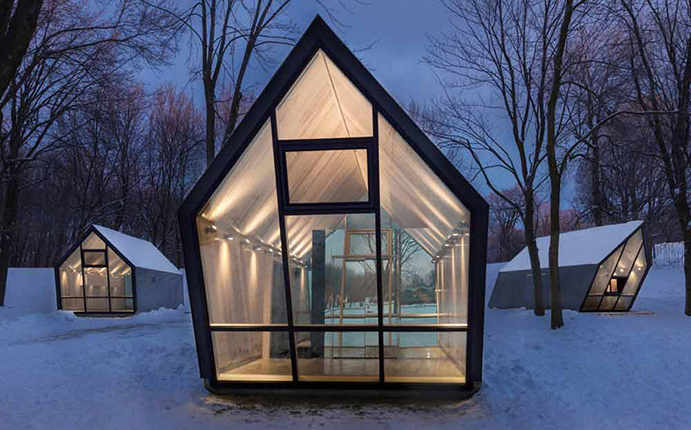
Glass kiosk at Beaver Lake, Mount-Royal Park – Image: Fany Ducharme, Normand Rajotte and Sylvain Legault
So why can’t the City of Westmount be more imaginative with its already existing, almost 100-year-old glasshouses that it has allowed to deteriorate and remain unused in recent years? Can I suggest it would not take a lot of effort, and just a little revisioning to repurpose them as centres of imagination, education and elucidation?
Why destroy something that could be so useful for ourselves and our children as well as a variety of park visitors? With some imaginative right-brain thinking and a healthy dose of TLC, this area of the park could become a centre of magic, marvels and skill training that would be of lasting benefit to many.
“The Westmount Greenhouses, unchanged since they were built out of catalogue parts in the twenties, still complete with their cranking mechanisms.”
– Mark London, Living With Our Westmount Heritage, 1994
In a booklet published in 1994 entitled Living With Our Westmount Heritage, long-time Westmount architect, urban planner and former resident, the late Mark London singled out these greenhouses for mention at the top of his list, “The Westmount Greenhouses, unchanged since they were built out of catalogue parts in the twenties, still complete with their cranking mechanisms,” and I agree with him, we need to value what we have, not destroy or rebuild in its place.
Mark London was a long-time fan of Westmount Park’s greenhouses. In a Montreal Gazette article from July 1987 focussing on architects’ favourite buildings, his choice had been this collection of glasshouses, which he saw as a single building. “It is not just the structure which is significant, but the tradition that it houses.”
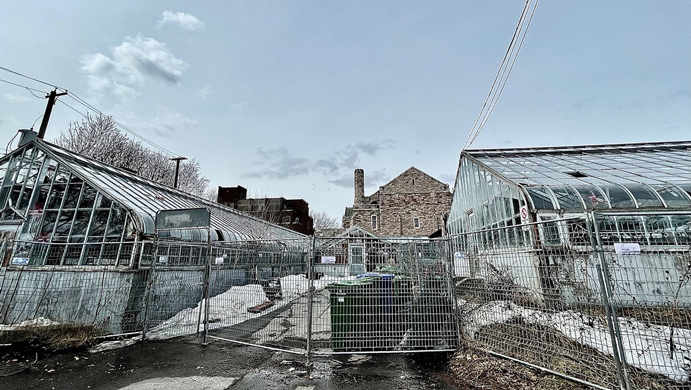
Westmount’s working greenhouses – Image: Shahrzad Ghaffari
Our glasshouses need care, consideration and respect
Although the greenhouses currently in limbo as to their future are the so-called “working greenhouse”, which are not as spectacularly beautiful in design as the centrepiece cascading Lord and Burnham greenhouse and the cupid (aka the frog) pond glasshouse (currently under reconstruction and repair), each, in their way, is as much a part of our local history and heritage, and as such deserves a little more care, consideration and respect.
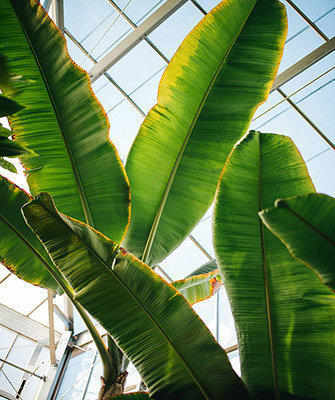
Banana plant in greenhouse – Image: Wes Hicks, Unsplash
One of these is the former ‘tropical’ greenhouse, much beloved by children and mine especially. Long before I could take my son to the tropics to see an actual banana plantation, he became aware that bananas did not grow on palms or even trees. For, despite their great size, bananas are a herb and their fruit a berry, one of the world’s largest herbs to be sure. He learned that one bitterly cold winter day in a Westmount Park greenhouse. He also saw his first indigenous totem pole example there, now housed in the Westmount library.
So, instead of destroying them and leaving a space that is not large enough for much else, I am proposing our nearly 100-year-old working greenhouses could easily become a vibrant and innovative centre of fun, pleasure and education in a whole host of different ways.
Why do we need more education?
In the early summer of 2020, walking in the park, I came across a mother with two children – a girl of about 7 or 8 and her younger brother, approximately 5 or 6 years of age. The young boy had a thick stick in his hand and was using it to pummel the trunk of a tree near the lagoon. The trunk had several fresh gouges, growing ever larger as he enthusiastically beat against it. I looked at his mother and requested she ask him to stop damaging the tree. “But what does it matter?”, she replied, “It’s only a stupid tree. It’s not alive or anything. So he’s not doing any harm.”
‘… instead of destroying them… I am proposing our nearly 100-year-old working greenhouses could easily become a vibrant and innovative centre of fun, pleasure and education in a whole host of different ways.’
Well, whether you believe trees are alive, sentient or not, anyone who has read the highly informative 2016 book The Hidden Life of Trees – What They Feel, How They Communicate by Peter Wohlleben and available in the Westmount Library, would disagree with you, as I certainly did with that mother. I explained that yes, indeed the tree, although not ‘human’ was a living entity and did not deserve to be damaged, or have its lifespan diminished by the execrable actions of her son while she looked on.
Interestingly enough, her daughter chimed in, “I already told my mother not to let him do it as he was hurting the tree.” Her mother only glared at her as she tentatively followed up with, “We learned that at school,” but her mother, or the girl’s brother, had apparently not been privy to the same teaching.
Whether or not you choose to believe that particular mother was in the minority of park visitors, I contend that she may be in the minority but she isn’t alone, as several long-term Westmount Park-goers have their own numerous stories to tell of parents allowing their offspring to damage trees and vegetation in the park.
Adults do it too
Indeed even some adults choose to do it. A few years ago the black willow, regenerating from the stump of the ancient and much beloved ‘climbing tree’ willow cut down in 2010, had some of its lower branches larger torn off in full view of those enjoying one of the Sunday afternoon concerts.
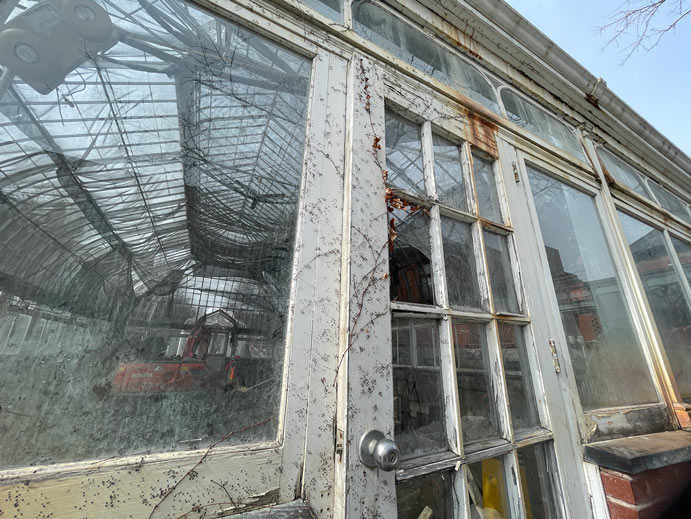
Westmount working greenhouse – Image: Shahrzad Ghaffari
When challenged about why they were damaging the tree, the perpetrators replied, “It was spoiling our view of the stage”. Other adults routinely permit their children to break off branches around the lagoon to set them afloat on the water or to throw for off-the-leash dogs to play ‘fetch’.
As do camp counsellors
In summer 2020, one of the camp councillors in charge of a group of children had them gathered on the bank of the upper pool near the library and was encouraging them to try and toss objects across the stream. Some of the more enthusiastic boys were busy stripping bark, branches and ground covering from the plants and trees in this area to throw into and across the pool.
‘I do think the City could do a lot more in the area of educating park-goers of all ages about biodiversity, park flora and fauna, and why respect and responsibility for safeguarding nature and natural elements are important for both the welfare and well-being of wildlife and we humans…’
Meanwhile, a dog owner was throwing sticks to his equally enthusiastic, large, off-leash dog, who at one point stopped and peed into the water and then came and pooped on the side practically at the feet of bystanders watching the children (and the dog). One of the children suggested the dog feces be thrown into the water. “Let the stupid ducks eat that!”, he exclaimed to the laughter of the bystanders. He was not admonished by his counsellor. Another missed learning opportunity.
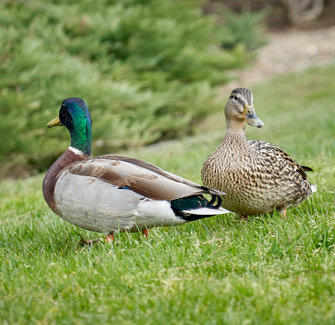
Typical Westmount Park Mallards – Image: Nikolay Tchaouchev, Unsplash
As the park becomes even more used by residents, children attending summer camps and visitors from all over the island, we need to ensure there are fun and innovative ways available to inform park-goers on a variety of subjects and show why damaging trees and other vegetation, and not caring for or respecting wildlife is not a responsible or environmentally healthy thing to do.
Wise messaging is especially important to those who insist on feeding the wild duck and other avian visitors completely inappropriate human foodstuffs as witnessed in Westmount Park (bread, chips, onions, pretzels, pizza – some often mouldy, which is hazardous for bird health. Nevertheless, the debate over what to feed ducks is endless and varied. Best advice… don’t feed them. They are wild and can forage for their food.
Nature in Westmount Park
Currently, there is a local petition, Support Nature in Westmount Park Now, circulating that is asking Westmount residents and those from neighbouring municipalities who use Westmount Park to request nature be bonified in the park. Some even want a designated nature area cordoned off from the rest of the park. I’m not currently convinced the will is there at City Hall to go as far as that.
Nevertheless, I do think the City could do a lot more in the area of educating park-goers of all ages about biodiversity, park flora and fauna, and why respect and responsibility for safeguarding nature and natural elements are important for both the welfare and well-being of wildlife and we humans, the currently inept custodians of the natural world.
An oasis for songbirds
Westmount Park used to be an oasis for many species of songbirds but recent uprooting and widespread clearing throughout the park of a variety of vines, flowering and berry-bearing bushes these wonders of nature used for food and nesting sites has substantially diminished their numbers, although the decline does also fit in with diminishing numbers across the continent.
Any park revitalizations that occur in our City should include plantings to help entice these bird populations back to our parks along with insects (bees, butterflies, dragonflies, etc.).
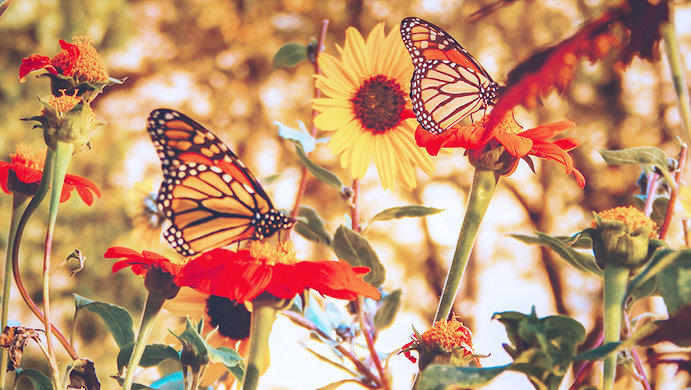
The right kind of flower plantings can attract butterflies – Image: Sarah Brown, Unsplash
An opportunity for growth
I could cite more examples but I think most readers get the point I am trying to make. Our in situ Westmount Park glasshouses could provide us with a collection of teaching spaces and access to greenhouse facilities that could become an invaluable resource and community teaching tool.
‘… greenhouse educational settings have become a popular choice for imparting important life lessons about planting and growing your own vegetables and flowers and caring for the natural world.’
Educators have attested to the positive impact greenhouses have on learning skills development, regardless of age and gender, and greenhouse educational settings have become a popular choice for imparting important life lessons about planting and growing your own vegetables and flowers and caring for the natural world. Given the opportunity, residents would love the chance to have access to a working greenhouse.
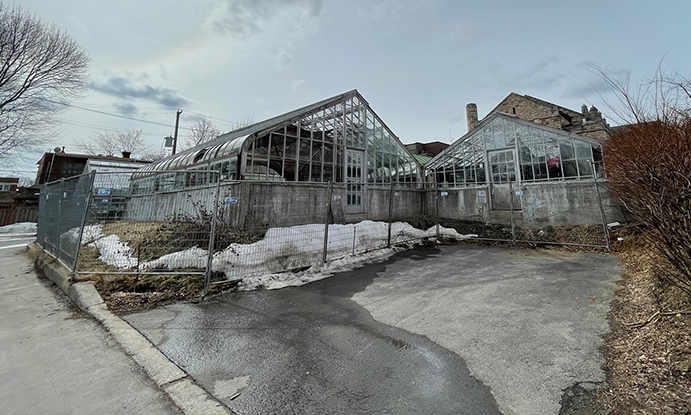
Westmount working greenhouses – Image: Shahrzad Ghaffari
Time to start planning for using our existing built glasshouse resources more effectively before they deteriorate beyond repair and cannot be saved.
How can you voice your opinion on the future of our Westmount Park glasshouses?
You can comment on the City website and/or below this article, as well as by signing and/or commenting on the online NatureScene: Support Nature in Westmount Park Now petition.
Disclaimer: The opinions expressed in this article are those of the author and do not necessarily reflect the opinions of WestmountMag.ca or its publishers.
Feature image: Shahrzad Ghaffari
Other articles by Wanda Potrykus
Wanda Potrykus is a writer, editor, translator and poet. A graduate of McGill, she has spent most of her career in marketing communications, PR, event and media relations specializing in international aviation, telecommunications, education and the marketing of the arts.



What a great article, thank you! It is very inspiring and relevant. I didn’t know we had these abandoned greenhouse, it truly is a shame! I hope we can recycle them into good use. As Wanda suggested, so much could be made out of them! I hope this article will get some attention from the city council to find solutions to give a second life to these hidden gems. I strongly believe we would need them now more than ever, weather it’s to grow food, for educational purposes, to grow plants to plant in westmount gardens, etc. If the pandemic has made realize many how strong is our need to connect to nature, to learn more about the environnement, and the need to have a certain level of food self sufficiency. I would be very interested in looking into solutions if other citizens have an interest into that project. Thank you again for writing such a great article!
These beautiful historical glasshouses must be preserved and given a new life. As Wanda Potrykus’ article demonstrates, there are so many possibilities as to their use. Apart from her excellent suggestion of a venue for environmental education, may I add an indoor community greenhouse for food production, an art space for sculptures, and a café.
Another excellent article Wanda.
It’s a exactly how I feel about this lost generation of kids so out of touch with nature, it’s frightening for the future.
We certainly lost their parents, it’s imperative that we don’t lose the kids too.
Thanks for the thoughtful writing
I agree that these glass houses are beautiful, historic, and worthy of preservation and reuse. An educational purpose seems ideal as this would also free up the central greenhouse to be a space of peace and repose, which is so important in the winter months. Thank-you Wanda for another excellent article.
Excellent observations and suggestions
Hey Wanda! We’re a local farm & this can be a perfect spacd for our exotic fruit r&d project!! If you see this please contact us we’d love to get more info on how we can possibly bring them to life!